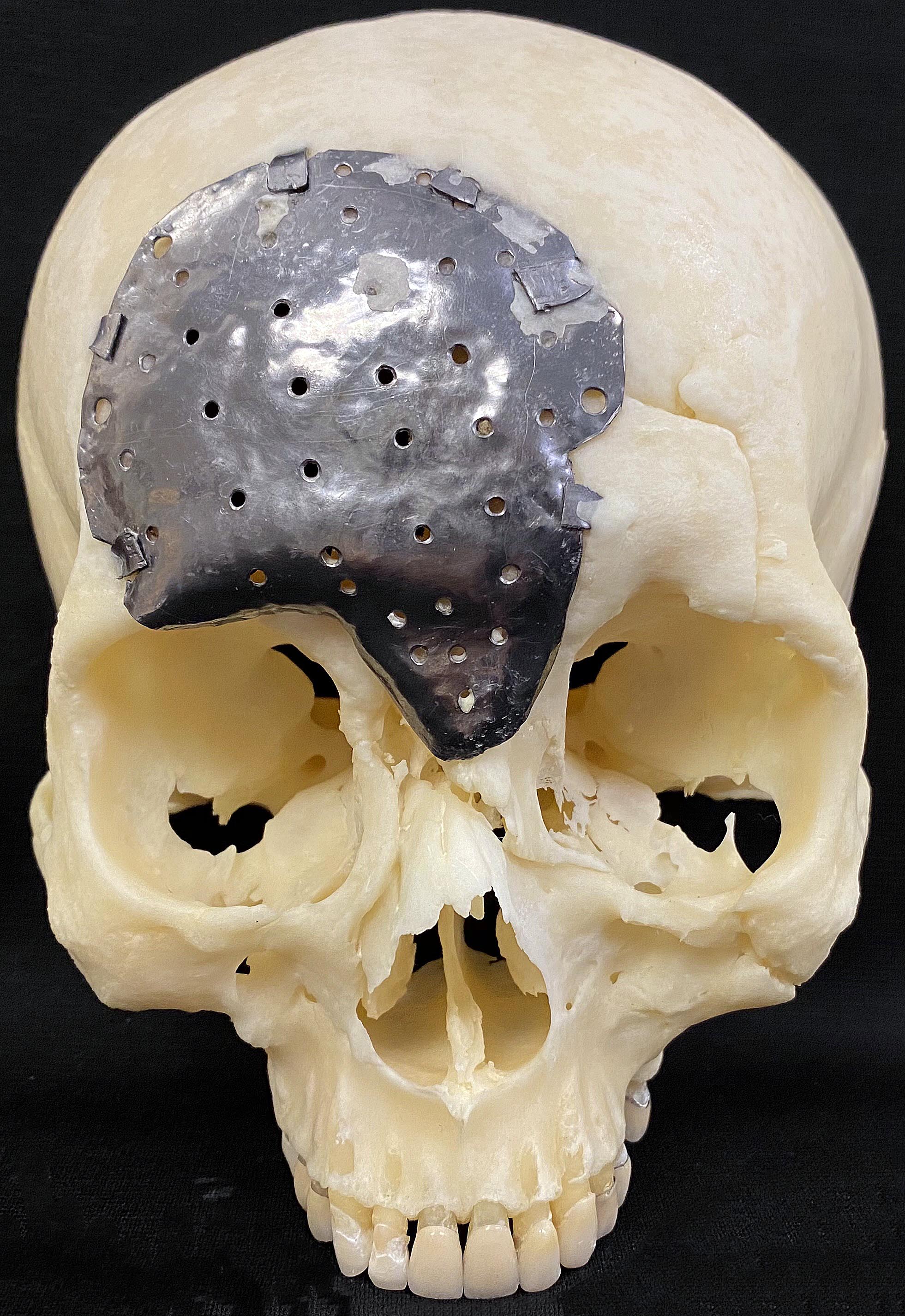0162 - Forensic Anthropology and Clinical Orthopaedics: A Natural Fit
Course Description
Bone Remodeling, Surgery and Medical Implants in the Human Skeleton

This co-taught live webinar by a pediatric orthopaedic surgeon and a forensic anthropologist will provide an integrated and complimentary overview of orthopaedics as it relates to forensic anthropology and the human skeleton. Included will be an overview of bone disease, establishing a differential diagnosis for cases using the mnemonic “VINDICATE,” types of orthopaedic implants and other iatrogenic devices, surgery, taphonomic variables that can mimic trauma, bone remodeling and healing, and how implants may aid in the identification of individuals.
The purpose of this workshop is to provide participants, whether novice or expert, with an overview of skeletal trauma, evidence of medical intervention in the human skeleton such as burr holes, bone flaps, and cranioplasty, implants to include suture anchors, vessel clamps, intramedullary nails/rods, surgical braces, rhinoplasty and chin implants; iatrogenic disease and trauma such as sternal fracture from CPR, and remodeling/healing. Participants will be provided anthropological and orthopaedic perspectives on how to identify and interpret bone disease and establish a differential diagnosis using the mnemonic “VINDICATE.”

This workshop combines the diverse, but complimentary perspectives of orthopaedics and forensic anthropology – one discipline deals with the dead, the other with the living. The anthropologist typically examines dry bones in a laboratory or outdoor setting (“body recovery scene”) to establish a decedent’s biological profile that consists of sex, ancestry, age at death, and stature. Other information that can be derived from a forensic skeletal analysis includes antemortem and perimortem trauma, disease, elapsed time since death, and personal identity of a decedent. The orthopaedist, in comparison, deals with patients in a clinical setting and seeks to surgically correct or treat trauma or other medical conditions. This workshop combines the expertise and perspectives of forensic anthropology and orthopaedics to highlight the kinds of complimentary information that can be derived from examination of skeletonized human remains.
Course Outline
Topics and times are subject to change and will include the following modules (with three 10-minute breaks on the hour each day HST):
Day 1 – Introduction to Forensic Anthropology and Clinical Orthopaedics (4 hours)
- Overview of forensic anthropology and clinical orthopaedics (1 hour)
- Intro to clinical orthopaedics, VINDICATE, and radiology
- “Phytes”: Indicators of age changes in the human skeleton; DISH and AS
- Diagnosis (VINDICATE) and treatment of musculoskeletal diseases with a discussion of DISH and Ankylosing Spondylitis
- Skeletal trauma: types of fractures, repair and healing
Holographic imagery
Case Report: 25 Years to Die
Day 2 – Special Topics in Orthopaedics and Forensic Anthropology (4 hours)
- Surgery and orthopaedic implants: “Two Perspectives”
Serialized medical implants and what they may or may not tell us (forensic orthopaedics) - Distinguishing trauma from disease, developmental, aging, normal anatomical variants, and taphonomy (hands’ on)
- Skeletal anomalies and variants that can mimic trauma
- Pediatric aspects of forensics – child abuse
Day 3 – Orthopaedic and Forensic Anthropology Case Reports and Closing (4 hours)
- Case Report: A very rare skeletal disorder in dry bone as Interpreted by the anthropologist and orthopaedist
- Case Report: “Does that skeleton have scoliosis or did I line up the bones up wrong?”
- Possible Case Report
- Q and A; Closing
The webinar will be broadcast live from the JABSOM Bone Lab at the University of Hawaii. The instructors will utilize known-identity human skeletons in the Willed Body Program. Workshop participants will be provided on-line instruction and encouraged to submit their comments and questions to the instructors through a live chat room. There will be real-time questions and answers. Following three 10-minute breaks at 9:00am, 10:00am and 11:00am (Hawaii standard time/HST) daily, the instructors will answer as many questions as time allows. The workshop will include several actual forensic cases that the anthropologist has worked on as well as real bone examples of trauma, disease, developmental conditions, and orthopaedic surgery in known-identity skeletons.
Participants who successfully complete the webinar will receive a certificate of completion. No continuing education or academic hours will be given for this webinar.
Learner Outcomes
By the end of this course participants should:
- Have an introductory knowledge of the fundamentals of orthopaedics and orthopaedic surgery, including medical implants and how they can be used in forensic anthropology
- Have an introductory knowledge of radiology
- Be familiar with establishing a differential diagnosis using VINDICATE
- Have a basic understanding of musculoskeletal disease, trauma, healing, musculoskeletal malformations, and methods of personal identification
- Be familiar with how aging affects the human skeleton, healing, and surgical intervention
Recommendations
Suggested references include:
- Photographic Regional Atlas of Bone Disease: A Guide to Pathologic and Normal Variation in the Human Skeleton (Third Edition). Robert W. Mann and David R. Hunt, Charles C. Thomas Publisher, Springfield, Illinois, 2005.